Full text
PDF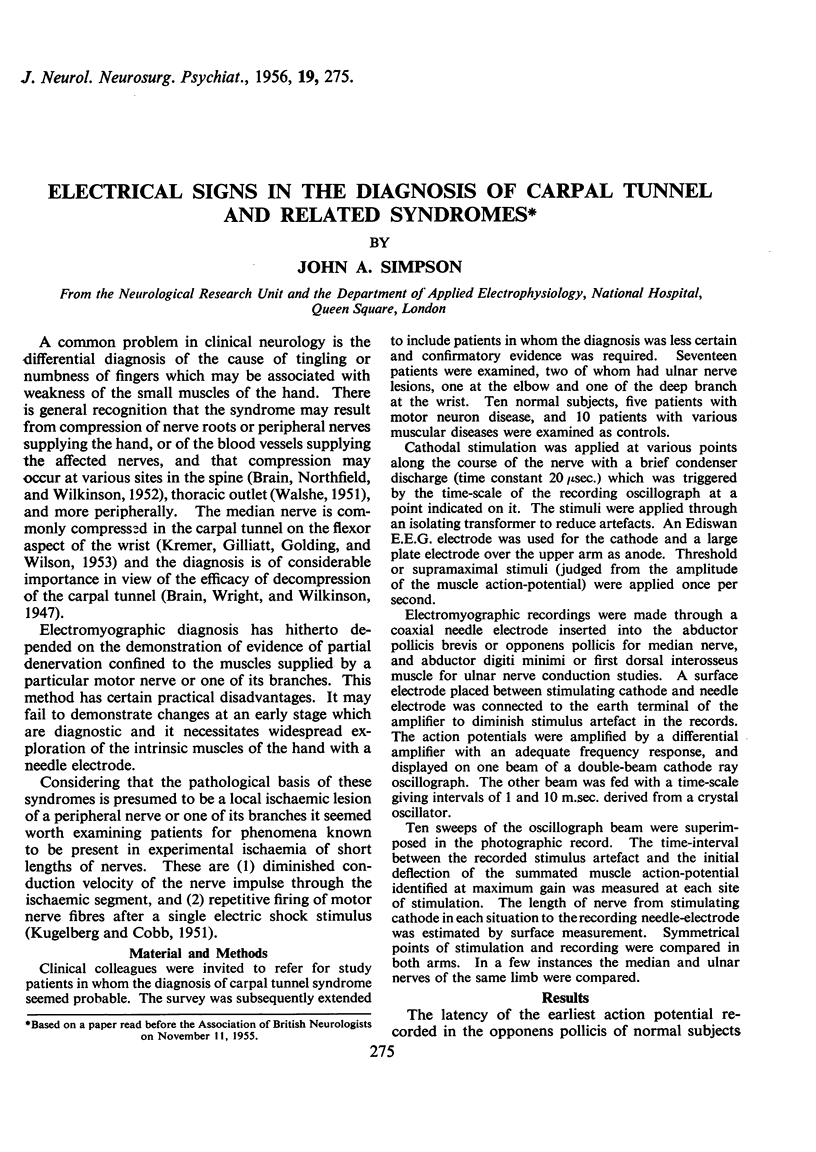
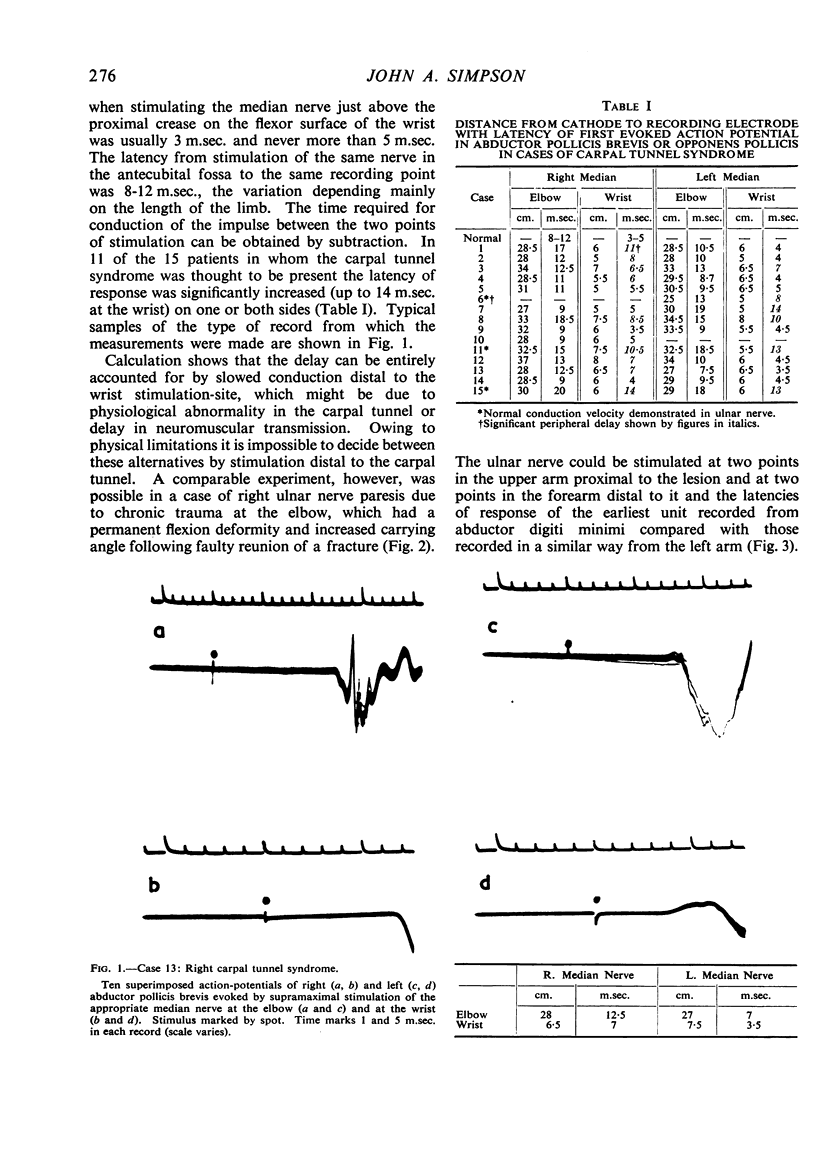
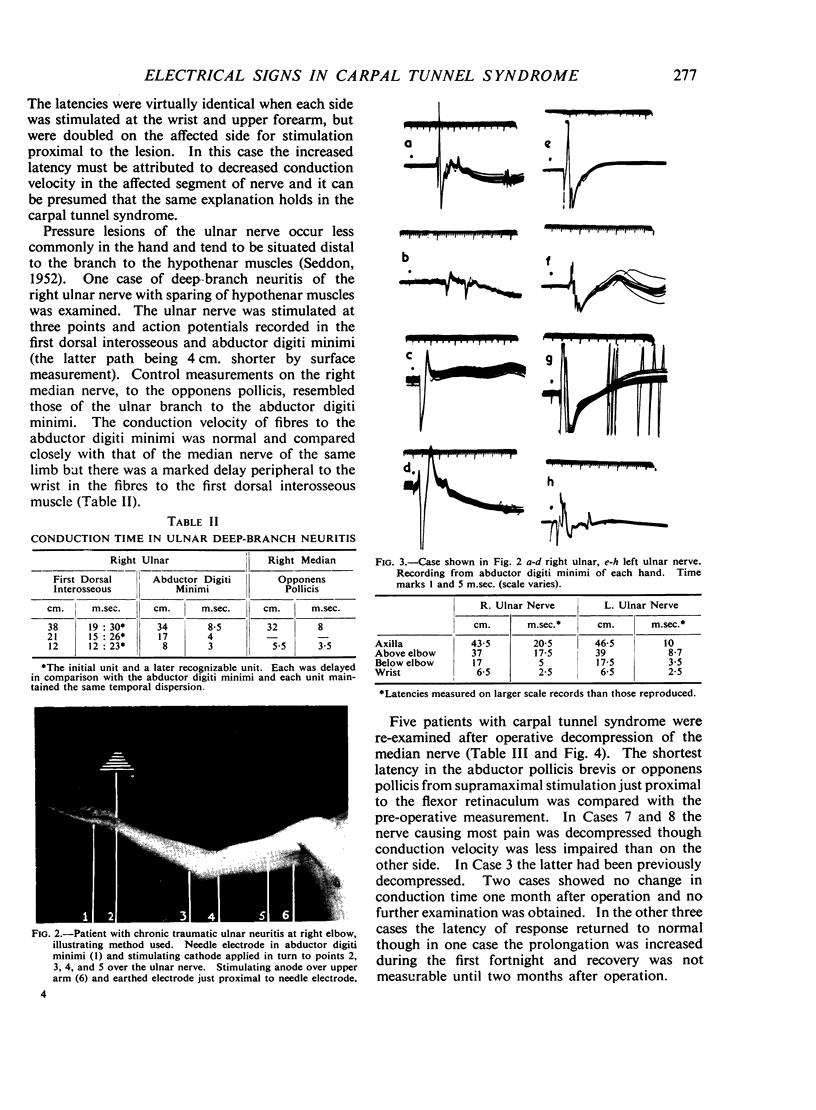
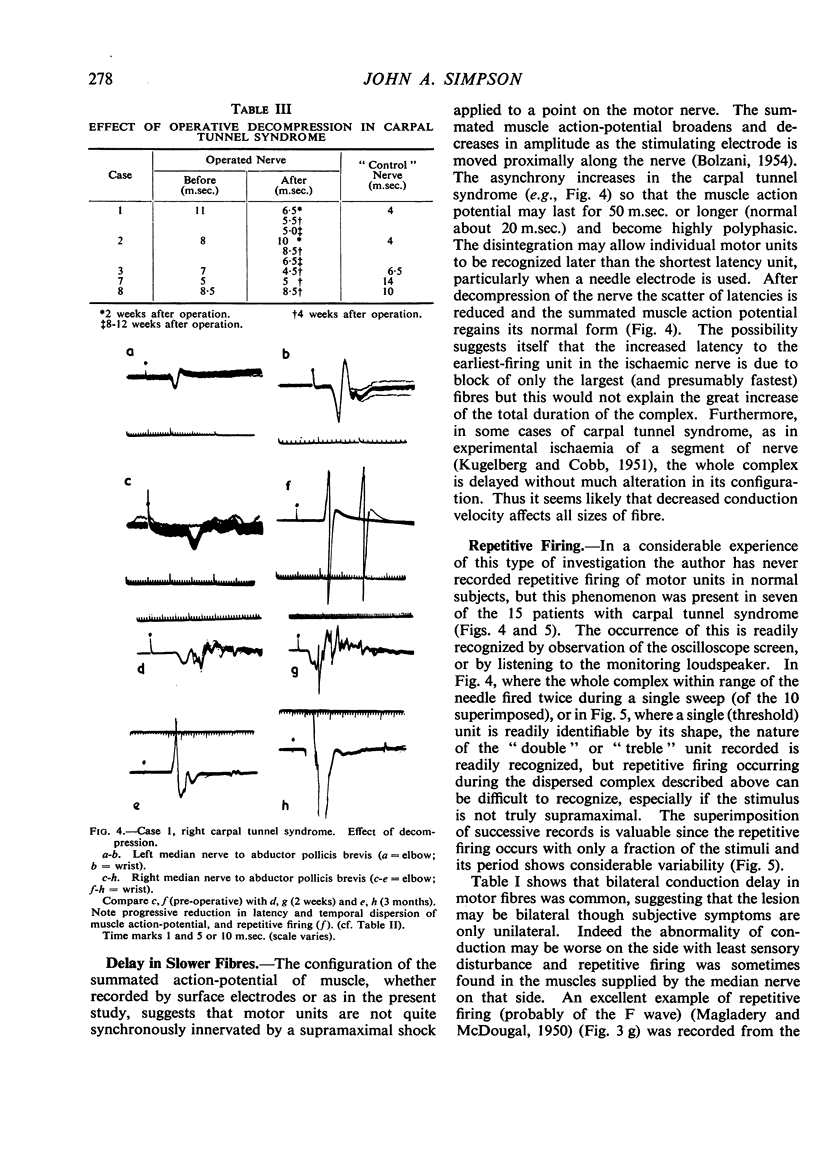
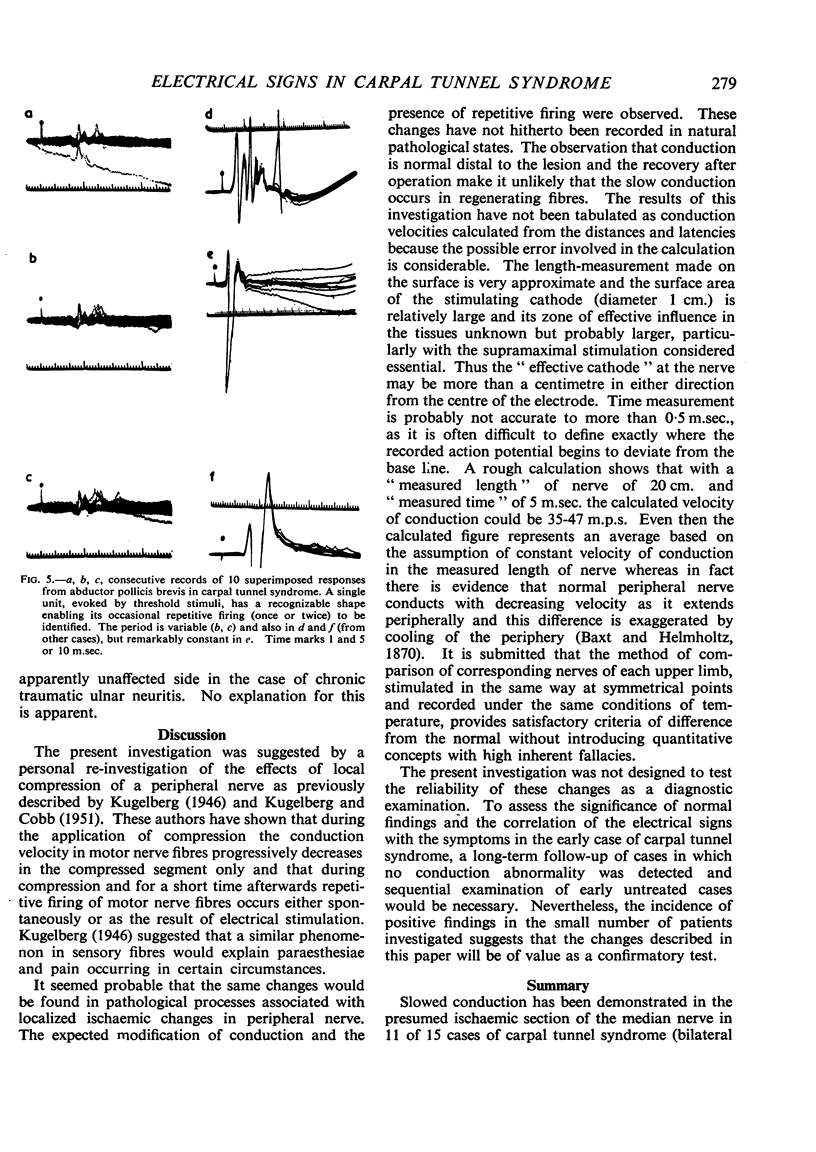
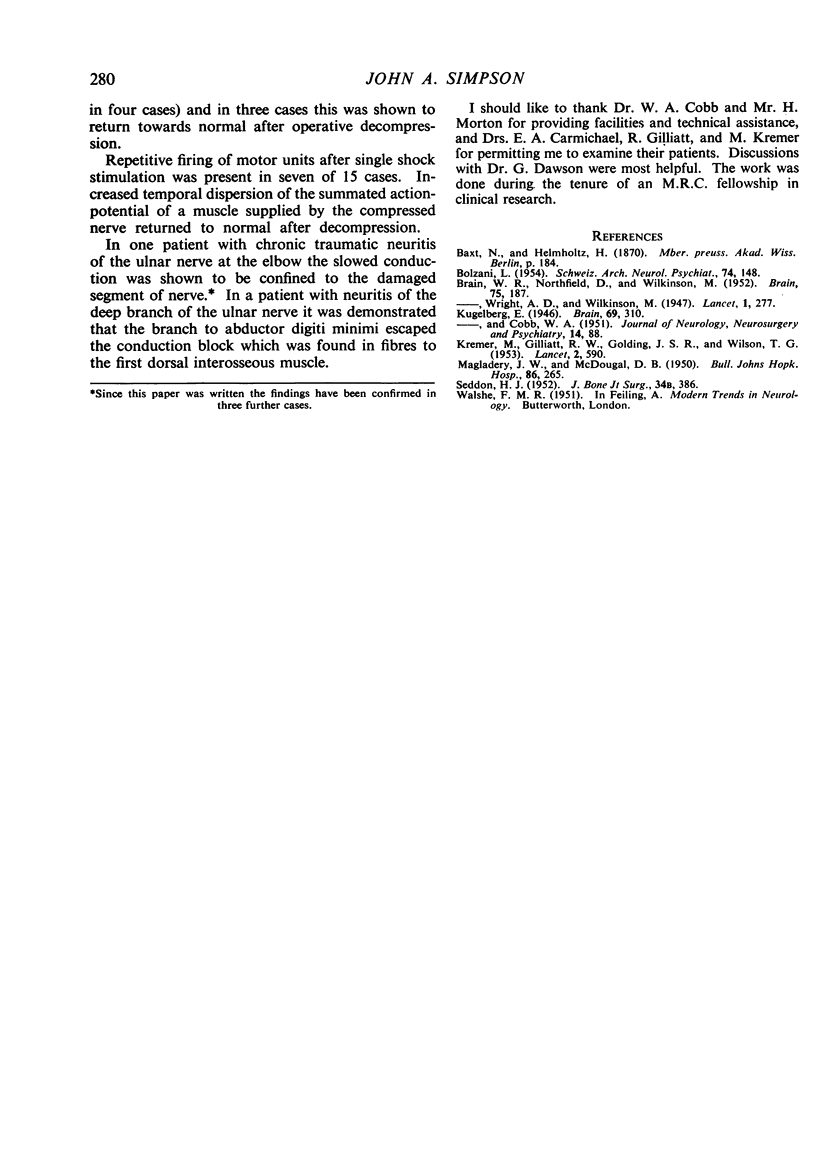
Images in this article
Selected References
These references are in PubMed. This may not be the complete list of references from this article.
- BOLZANI L. La curva intensità-durata (i/t) e la velocità di conduzione del nervo nell'uomo. Schweiz Arch Neurol Psychiatr. 1954;74(1-2):148–165. [PubMed] [Google Scholar]
- BRAIN W. R., NORTHFIELD D., WILKINSON M. The neurological manifestations of cervical spondylosis. Brain. 1952 Jun;75(2):187–225. doi: 10.1093/brain/75.2.187. [DOI] [PubMed] [Google Scholar]
- KREMER M., GILLIATT R. W., GOLDING J. S., WILSON T. G. Acroparaesthesiae in the carpal-tunnel syndrome. Lancet. 1953 Sep 19;265(6786):590–595. doi: 10.1016/s0140-6736(53)90326-2. [DOI] [PubMed] [Google Scholar]
- MAGLADERY J. W., McDOUGAL D. B., Jr Electrophysiological studies of nerve and reflex activity in normal man. I. Identification of certain reflexes in the electromyogram and the conduction velocity of peripheral nerve fibers. Bull Johns Hopkins Hosp. 1950 May;86(5):265–290. [PubMed] [Google Scholar]
- SEDDON H. J. Carpal ganglion as a cause of paralysis of the deep branch of the ulnar nerve. J Bone Joint Surg Br. 1952 Aug;34-B(3):386–390. doi: 10.1302/0301-620X.34B3.386. [DOI] [PubMed] [Google Scholar]



